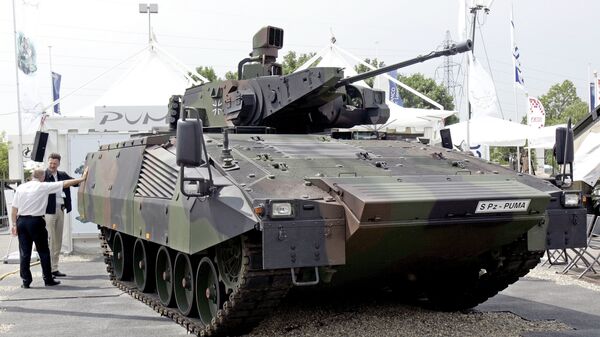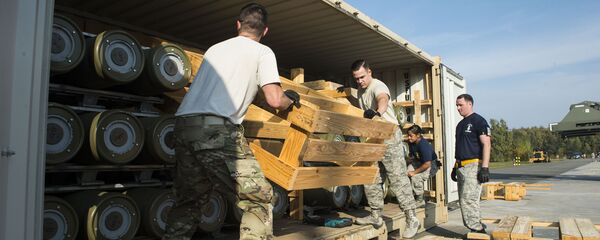Just over a third of the new military equipment delivered to the Bundeswehr by manufacturers in 2017 is fit for service, the German defense ministry has revealed in a new report. Of the 97 major pieces of equipment delivered to the armed forces last year, only 38 of them were combat ready, the report says.
According to the report, of the 71 Puma infantry fighting vehicles delivered, 27 are combat ready. Of the eight new Airbus A400M Atlas military transports, half are fully operational. Just two of the seven Eurocopter Tiger combat helicopters and four of seven NH Industries' NH90 transport helicopters are combat ready. Furthermore, just one of the four Eurofighter Typhoon fighter jets delivered in 2017 is fit for service.
The operational readiness of the new equipment looks bleak even compared to the overall readiness of the 5,000 pieces of equipment already deployed by the Bundeswehr, according to dpa. A February 2018 report concluded that well over half of the existing equipment is combat ready.
Die Linke MP Matthias Hohn criticized the situation surrounding the new equipment, calling defense minister Ursula von der Leyen's decision to "allow this multi-billion dollar bungling by the arms industry at the expense of taxpayers" a "scandal."
According to Hohn, the defense minister has not lived up to her own plans of increasing readiness. "Brand new military equipment directly from the production lines of the defense industry doesn't work. It is unacceptable to accept equipment…and pay for it when it doesn't work," the lawmaker stressed.
The state of the German military has been the subject of controversy amid regular reports of equipment and supply problems, staff shortages, and complaints of underfunding. Earlier this month, German media reported that none of the newly-developed assault rifles expected to replace the G36 rifle met the army's expectations. Before that, problems were reported with the military's existing equipment, including its Leopard 2 main battle tanks, Tornado combat jets, submarines, and other equipment, much of which has been described as being in a poor and "outdated" state.
Earlier this year, US President Donald Trump called on Washington's NATO allies to spend 4 percent of GDP on defense, up from the existing 2 percent of GDP standard. German opposition lawmakers called such demands "absolutely crazy," given that there is no major external threat facing Germany. According to Die Linke lawmaker Alexander Neu, only the defense industry and military were interested in more spending, whereas the public is more interested in social welfare spending.





